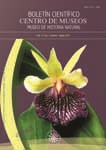Authors
Abstract
Wild bees can be useful elements to monitor the state of ecosystems. This study contributes to the knowledge of these insects in the Department of Cauca and especially in the Corregimiento La Gallera. The composition of wild bees in the area was determined and how this can provide information in the PNNM management plans. Samplings were carried out in two different ecosystems in three districts, El Cóndor (forest and restoration plot of land), El Rosal and La Gallera (forest and forage banks). Four methods were used: entomological insect net, Malaise trap, Van Someren Rydon trap, and artificial baits distributed in two 200 m transects. 432 specimens were collected , grouped into 42 species and four families of bees: Apidae, Halictidae, Megachilidae and Colletidae. 34 species were collected in El Rosal, 18 species were collected in El Cóndor and 9 species were collected in La Gallera. Neocorynura and Augochloropsis, were the genus with a greater number of species. Colletidae family had a single representative belonging to the genus Chilicola Spinola which was collected in El Rosal. The greatest richness was registered in El Rosal (81%), followed by El Cóndor with 43% and finally La Gallera with 21%. The species Partamona sp.1, Trigona (Trigona) truculenta, Parapartamona caliensis and Partamona sp.2 were found in the three districts from which, the three first were the most abundant.
Keywords
References
BARRERA-CATAÑO, J.I. & VALDEZ-LÓPEZ, C., 2007. Herramientas para abordar la restauración ecológica de áreas disturbadas en Colombia. Universitas Scientiarum. Rev. de la Fac. de Ciencias, 12: 11-24.
BROOKS, R.W. & ENGEL, M.S., 1999. A revision of the augochlorine bee genus Chlerogas Vachal (Hymenoptera: Halictidae). Zoo. J. of the Linnean Society, 125: 463-486.
DOMÍNGUEZ-ÁLVAREZ, A.; CANO-SANTANA, Z. & AYALA-BARAJAS, R., 2009. Estructura y fenología de la comunidad de abejas nativas (Hymenoptera: Apoidea). Div. de hábitats y Ecol. de comunidades, 421-432.
FERNÁNDEZ, D.C.; ZAMBRANO, G. & GONZÁLEZ, V.H., 2010. Comportamiento de nidificación, notas taxonómicas y distribución potencial de Paratrigona eutaeniata (Hymenoptera: Apidae, Meliponini). Rev. Col. de Entomología, 36 (2): 325-332.
GÁLVEZ, J., 2002. La restauración ecológica: conceptos y aplicaciones. Instituto de Agricultura, Recursos Naturales y Ambiente. U. Rafael Landivar.
GONÇALVES, R.B. & BRANDÄO, C., 2008. Diversidade de abelhas (Hymenoptera, Apidae) ao longo de um gradiente latitudinal na Mata Atlântica. Biota Neotropica, 8 (4): 051-061.
GONZÁLEZ, V.H., 2006. Familia Colletidae: 471-474 (en) FERNÁNDEZ, F. & SHARKEY, M (eds.) Introducción a los Hymenoptera de la región Neotropical. Bogotá, D.C.: Sociedad Colombiana de Entomología y Universidad Nacional de Colombia.
GONZÁLEZ, V.H. & ENGEL, M.S., 2004. The tropical andean bee fauna (Insecta: Hymenoptera: Apoidea), with examples from Colombia. Entomologische Abhandlungen, 62 (1): 65-75.
MICHENER, C.D., 2000. The bees of the world. Baltimore, Maryland: John Hopkins University Press. 953p.
MORENO, C.E., 2001. Métodos para medir la biodiversidad. M&T-Manuales y tésis SEA, vol. 1. Zaragoza. 84p.
NATES-PARRA, G. & GONZÁLEZ, V., 2000. Las abejas silvestres de Colombia: Por qué y cómo conservarlas? Acta Biológica Colombiana, 5 (1): 5-37.
NATES-PARRA, G.; GONZÁLEZ, V.H. & OSPINA-TORRES, R., 1999. Descripción de los machos y anotaciones sobre la biología de Paratrigona anduzei y P. eutaeniata (Hymenoptera: Apidae: Meliponini) en Colombia. Caldasia, 21 (2): 174-183.
REYES-NOVELO, E.; MELENDEZ, V.; DELFIN, H. & AYALA, R., 2009. Abejas silvestres (Hymenoptera - Apoidea) como bioindicadores en el Neotrópico. Tropical and Subtropical Agroecosystems, 10: 1-13.
SMITH-PARDO, A.H., 2005. The bees of the genus Neocorynura of Mexico Hymenoptera: Halictidae: Augochlorini. Folia Entomol. México, 44 (2): 165-193.
SMITH-PARDO, A.H. & GONZÁLEZ, V.H., 2007. Diversidad de abejas (Hymenoptera: Apoidea) en estados sucesionales del bosque húmedo tropical. Acta Biológica Colombiana, 12 (1): 43-56.
WINFREE, R.; GRISWOLD, T. & KREMEN, C., 2007. Effect of human disturbance on bee communities in a forested ecosystem. Conservation Biology, 21 (1): 213-223.

 PDF (Español)
PDF (Español)
 FLIP
FLIP


















